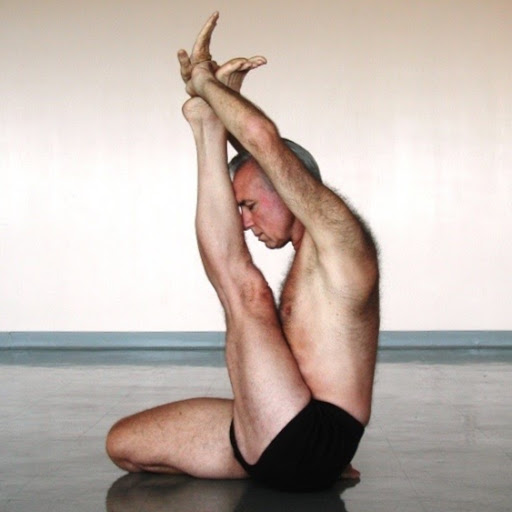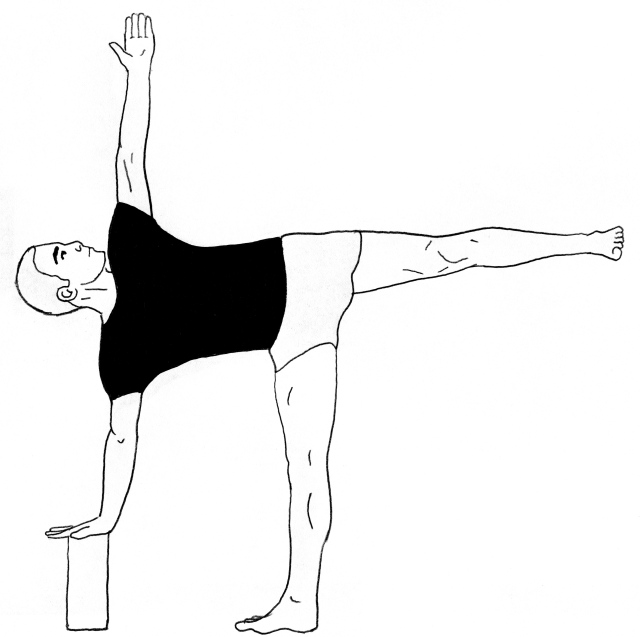Some time ago, I was at the Dutch Iyengar association convention for a two-day workshop with John Schumacher. Anytime I meet a senior teacher, I feel deeply grateful for the chance I have to learn from them. It is truly inspirational to meet people who have dedicated their lives to the practice of yoga, sometimes for twice the amount of time I have been living.

John Schumacher, certified Advanced Iyengar Yoga teacher
I was talking with several people recently on Iyengar yoga attracting older practitioners; a friend thought it was very cool to see an older lady following a class in a video I was showing him. I found it quite funny, since at the convention I was probably one of the youngest in the room, with an average age I would esteem to be around 50. And yes, everyone gets into headstand/shoulderstand/whatever crazy pose is being taught at the moment. I’ve never seen this as a problem, since I’m used to being the youngest around, but I started thinking about it when another friend was disappointed I was not taking the exam this year because she thought the Iyengar lineage is in need of young teachers.
There are multiple reasons why there are few young Iyengar teachers; first because the training lasts three years, which is hard for young people to commit to when their lives are not yet settled; secondly because many people turn to Iyengar yoga after sustaining an injury from different styles of yoga practice.
For some reason, Iyengar is seen as an austere style of practice, very strict and static; or as therapeutic yoga only.
This raises some questions:
- why are younger people less attracted to the Iyengar style of teaching?
- does it matter? shall we (the Iyengar community at large) strive to attract young people or to change these stereotypes?
Teaching is such a difficult endeavor. I am always worried about the safety of my students, which may sometimes make me sound like a party pooper. I’ve had my lot of female students being annoyed at my telling them they should not do strong twists or inversions on their period. Sure, your body, your choice – but then don’t tell me you’re on your period. On the one hand, I remember when I started, and it also annoyed me; on the other hand, after years of practice, I have noticed that if I do invert during my period, it gets irregular. I feel strongly about the rules of the Iyengar system, because I have experienced they are there for a reason, especially for beginners.
However if you advance in your practice, a certain playfulness is definitely encouraged in the Iyengar system, way more than in other types of yoga. It seems to me that the rules for the alignment are there in order to reset your body and your awareness. Once general alignment in asana is obtained, modifications to the classical alignment are welcome, as long as you know and feel why that is. For exemple, during the workshop with John Schumacher, my teacher was demonstrating ardha chandrasana, and John showed us that the alignment for HER body meant that her foot should be higher than hip level, so that both sides of her torso could be extended evenly. So a “good” alignment for someone may be different from their neighbor, and may also be different from the “picture perfect” alignment.

Ardha Chandrasana, illustration by Chadyoga
Being young(ish), I tend to like physically demanding classes. I’ve noticed many young people like “fancy” poses like arm balances and inversions. I do too! So I try to incorporate some of these poses in my teaching as well, so that I can transfer some of that playfulness to my students. There is also a definite sense of accomplishment in students when they manage to get into a pose they thought was impossible. And if it’s what’s bringing them to yoga in the first place, is it really an issue? I’d rather teach some flashy poses in my class, where I’m sure they will get correct guidance, than have them try it by themselves at home and injure themselves.
After all, I also started by being attracted by the “workout” and the “crazy poses”, but as my practice grew, so did my interest in other limbs. And I hardly practice arm balances anymore nowadays, apart from the occasional beach/park practice, and the one level III class that there is at my studio. But going to a level III class means that you are not a beginner (you should be able to hold headstand and shoulderstand for at least 5 minutes each), so this is not a solution. So should there be special “young people” classes? Do we really need one more type of class? Or should we leave it to other styles of yoga?
I’m curious to hear your opinions on this; for some more reading you can also check out the 2011 survey from the IYNAUS (which shows they are aware of this issue, but do not really bring any solutions).